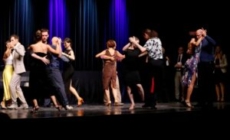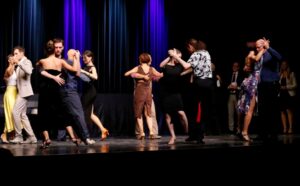Arlequins au clair de lune, 1953
A major retrospective exhibition honoring Géza Szóbel, the Hungarian-born, Paris-based painter who would have turned 120 this year, opens on October 5, at the Ferenczy Museum in Szentendre (near Budapest). Organized in collaboration with Kálmán Makláry Fine Arts Gallery, the exhibition aims to reintroduce a long-overlooked figure of French modernism to the public.
Titled “A Mysterious Hungarian Painter in Paris – Celebrating the 120th Anniversary of Géza Szóbel’s Birth,” the show will run through November 9, and features works selected from the private collection of gallerist Kálmán Makláry.
Fact
Born in Komárom in 1903, to a Jewish family, Géza Szóbel received artistic training in his hometown, as well as in Budapest, Berlin, and Prague. By the late 1920s, he had settled in Paris, where he fully immersed himself in the city’s avant-garde art scene. Early in his career, he was influenced by both Surrealism and the École de Paris, the two defining movements of pre-war French modernism.
In 1937, Szóbel contributed to the monumental fresco project at the Palais de l’Air at the Paris World’s Fair, under the direction of Sonia Delaunay. During World War II, he served six years in the Czechoslovak army in France and the UK. It was during this period that he created two graphic series — Civilisation and Star of David — which portrayed the horrors of war and the suffering of Jews, capturing the trauma and vulnerability of human existence.
Tragically, Szóbel’s entire family in Komárom perished in the Holocaust in 1944. After the war, the artist never returned to Hungary.
Following World War II, Szóbel’s painting style evolved: his works became brighter, more abstract, and increasingly spiritual. Using a luminous glazing technique,
he filled his canvases with angelic warriors, childlike figures, and stained-glass-like compositions that evoked an ancient, mystical world untouched by time — one where humanity was not yet fully born. From the mid-1950s, his style became more fluid, abstract, and dynamic, while retaining a melancholic undercurrent.
Szóbel passed away in Paris in the summer of 1963, at the age of 58, while his final solo exhibition was still on view in the city.
Like many émigré artists associated with the second École de Paris, Szóbel’s legacy faded into obscurity after his death. His works were scattered by the 1970s, and art historians largely overlooked his contributions. As a multilingual, multicultural artist who considered all of Europe his home, Szóbel ultimately received little recognition in any of his homelands. It was not until the early 2000s that the art market began to take renewed interest in his work.
Now, the Szentendre retrospective seeks to change that. By reconstructing the chronology of his life and reuniting scattered works, the exhibition offers a long-overdue institutional platform for one of French modernism’s most promising yet forgotten figures.
Related article
Masterpieces Are Being Sold for Peanuts: 19th-Century Paintings Head to Auction
Barabás and Benczúr originals offered in public sale as Dunaferr liquidation puts €51,000 worth of cultural treasures up for grabs.Continue reading
Via MTI; Featured image:Wikimedia Commons
The post “A Light in Exile”: Rediscovering Géza Szóbel’s Lost Parisian Legacy appeared first on Hungary Today.
Source link





























